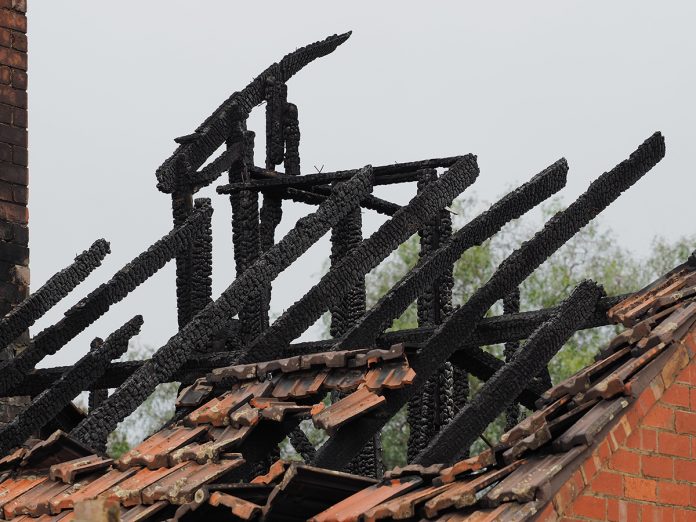Mark Holdsworth, Director at Civica, argues that housing providers must become insight-driven to increase fire safety
The fire at a student residence in Bolton in November 2019 provided a stark reminder on the need for action for better fire safety standards in buildings across the country. It’s been more than two years since the tragedy of Grenfell Tower, and hundreds of blocks are still covered in flammable ACM cladding. In June 2019, the Independent Review of Building Regulation and Fire Safety led by Dame Judith Hackitt, found that there are issues in the way some high-rise residential buildings are built, managed and looked after. Her review set out how we can ensure that buildings are safe throughout their lifecycle. At all stages of a building’s lifecycle – from when it’s designed and built, to when people are living in it, someone will be responsible for managing and minimising fire and structural risks.
As part of this, Dame Hackitt described how housing providers must empower residents by giving them the right safety information about their building and making sure that their views or concerns about the safety of their building are heard and not ignored. Therefore, social housing providers must adopt the latest technologies to ensure residents are safe and feel safe, in their homes and to make sure this remains the case for future generations. Through the power of data insights, housing providers can go a long way to meeting the suggestions from the review.
Assessing the risk in a building
The government outlines a five-step checklist during a fire safety risk assessment that employers and social housing providers should follow. The list includes identifying fire hazards, pinpointing which people are at risk, evaluating, removing or reducing these risks, recording findings and preparing an emergency plan and finally reviewing and updating the fire risk assessment regularly.
However, this checklist doesn’t highlight the magnitude of checks that are required in some buildings. The Local Government Association’s guide to Fire safety in purpose-built blocks of flats is over 190 pages of checks. Findings from these assessments generate masses of data that need to be managed and acted upon quickly and efficiently, and mistakes can be made if this data is not stored and managed appropriately.
Advancing technologies can assist by collecting and providing insights into the data while storing it safely to ensure compliance. Asset management solutions contain risk management tools that allow social landlords to take control of their risk assessments processes, managing both assessments and associated actions. Each building is different, so an effective risk management tool provides housing providers with unlimited user-defined assessment types e.g. Fire Risk, Legionella, user-defined risk scoring, recording and management of remedial actions and clear tracking of responsible parties.
Safety throughout the lifecycle of the building
And this should not just be done at the start of a building lifecycle; new fire risks develop during the lifespan of a building. Ongoing asset management, planned maintenance and servicing and inspections are all needed to ensure the continued safety of people living in a building. Without advancing technologies, this would have to be done manually. Each assessment typically results in ten actions, each of which needs to be individually prioritised, allocated, planned for remediation and when remediated, closed. For a large housing provider, this could mean tens of thousands of actions that need to be manually shared with contractors and sub-contractors.
The volume of actions for any organisation is very time consuming and leaves a housing association susceptible to mistakes. It’s vital to make sure that fire risk actions are scheduled and actioned on time and housing providers have on-demand access to up-to-date data for internal and external inspections.
By automating the administrative tasks, housing providers can reduce manual administration by up to 80–90%. This frees up time for housing providers should there be an issue or a risk that needs acting upon quickly, and data analytics can be used to prioritise which actions need attention first. Risk of error in data from manual processing is reduced, so housing providers can deliver faster, responsive services, ensuring compliance and keeping residents safe.
Engaging the resident to make them feel safe
No one knows their own home better than the resident, so listening to their concerns over fire safety and providing advice on their concerns is vital. Housing providers need to capture and manage all interactions with customers, from preferred language to their optimum communication channel, whether online, post, email, text or social media. Once again, this data needs to be stored and managed effectively to provide valuable insights. Being able to segment your resident audience into groups with different needs, allows you to profile the different audiences. Having a better understanding of residents enables housing providers to tailor their fire safety communications to meet the needs of the people living in the building. This data can be analysed to drive the topics of resident involvement sessions, to further advice on fire safety best practices.
Moving forward, data insights will drive decisions through the design, construction and maintenance of social housing. Post the Hackitt review, technologies such as Building Information Management (BIM) software are likely to be mandated in the public sector. BIM, and other advancing technologies and construction techniques, will improve drive increasing amounts of data that will assist with fire safety. Housing associations need to become insight-driven decision-makers and embrace tools that analyse data and provide them with the most valuable insights to act upon fire risks while empowering residents by giving them the correct, up-to-date safety information at all times.




![Europe’s housing crisis: A fundamental social right under pressure Run-down appartment building in southeast Europe set before a moody evening sky. High dynamic range photo. Please see my related collections... [url=search/lightbox/7431206][img]http://i161.photobucket.com/albums/t218/dave9296/Lightbox_Vetta.jpg[/img][/url]](https://www.openaccessgovernment.org/wp-content/uploads/2025/04/iStock-108309610-218x150.jpg)






